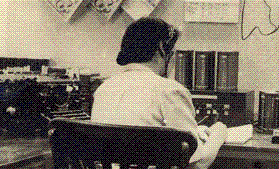Asia-Pacific Region Intelligence Center
DCI Walter Bedell Smith Creates the Directorate for Intelligence 본문
DCI Walter Bedell Smith Creates the Directorate for Intelligence
CIA Bear 허관(許灌) 2009. 1. 1. 14:50
The end of World War II brought many changes to American national security. A month and a half after the end of the war, President Harry S. Truman disbanded the Office of Strategic Services (OSS). In 1946, Truman created the Central Intelligence Group (CIG), which was the predecessor of the Central Intelligence Agency (CIA). The CIA itself was established when President Truman signed the National Security Act of 1947. Through all this change one need became apparent: a streamlined method to produce finished intelligence analysis to help the President and others in our government make informed decisions about threats and opportunities overseas.
In the Beginning…
With its creation, the CIA inherited many of the organizational structures of its predecessor CIG. These included the Office of Reports and Estimates (ORE), which was the forerunner of today’s Directorate of Intelligence (DI). ORE was created in 1946 by then DCI Hoyt Vandenberg to undertake CIG’s mandated intelligence production activities.
Almost immediately, however, ORE also was assigned research and production services of “common concern.” As a result, its mission rapidly became ill-defined, its management unwieldy, and its intelligence products uneven both in quality and their relevance to national security issues.
The analysis products also suffered from the exodus of academic talent that followed the dissolution of the OSS. Several contemporary studies and surveys of the nascent Agency—including one in which Allen Dulles played a key role—recommended changes, but little was done to get a grip on the problem until the arrival of DCI Walter Bedell Smith in 1950.
New DCI Makes Changes to Growing Agency
Smith took over the CIA as the invasion of South Korea highlighted what he saw as the Agency’s postwar analytic deficiencies.
One of his first actions on the analytic front was to divide ORE into three offices:
-
the Office of National Estimates (ONE), which produced coordinated “national estimates”;
-
the Office of Research and Reports (ORR), which conducted basic research; and
-
the Office of Current Intelligence (OCI), tasked with writing analytic summaries and other brief products for policymakers.
Smith also worked on luring back first-rate scholars such as Harvard professor William Langer, who had headed the OSS research and analysis unit, and Yale history professor Sherman Kent, who would earn a reputation as the father of CIA research and analysis. Under Langer and Kent, onE transformed estimates into all-source, tightly argued, authoritative, useful assessments and thus ensured that CIA achieved full responsibility for these strategic analyses.
DI Replaces ORE
In 1952, Smith established the DI to manage all of the Agency’s analytic functions. He organized the DI in a manner similar to how he had established the CIA’s administrative and clandestine functions. The new DI retained the six then existing analytic offices—including the newly created Office of Scientific Intelligence and the Office of Current Intelligence.
Smith turned to Loftus Becker, a young lawyer serving as his executive assistant, to head the new DI when his first choice, Langer, declined the job because of its administrative burden. Becker was an Army intelligence veteran, but a newcomer to the Agency. As Deputy Director of Intelligence, he set two important standards:
-
Reaching out to the Agency’s clandestine services and other intelligence agencies, and
-
Regularly reviewing the products of the offices in his directorate from the standpoint of “common sense” and consumer impact.
Becker stayed just over a year before turning the reins over to Harvard law professor Robert Amory, a well-connected Bostonian who had been recruited in part because of his administrative abilities. Amory, who had previously headed ORR, spent his nine-year tenure as DDI solidifying the structure and management practices established by Becker. He also helped build and cultivate the analytic capability of the DI.
Both Becker and Amory took a hands-on approach that helped set the tone for the new directorate.
Deputy Directors of Intelligence
-
Loftus Becker (January 1952–May 1953)
-
Robert Amory (May 1953–March 1962)
-
Ray Cline (March 1962–January 1966)
-
R. Jack Smith (January 1966–May 1971)
-
Edward Proctor (May 1971–June 1976)
-
Sayre Stevens (June 1976–April 1977)
-
Robert Bowie (April 1977–August 1979)
-
Bruce Clark (August 1979–April 1981)
-
John McMahon (April 1981–January 1982)
-
Robert Gates (January 1982–April 1986)
-
Richard Kerr (April 1986–March 1989)
-
John Helgerson (March 1989–March 1993)
-
Douglas MacEachin (March 1993–June 1995)
-
John Gannon (June 1995–July 1997)
-
John McLaughlin (July 1997–June 2000)
-
Winston Wiley (June 2000–May 2002)
-
Jami Miscik (May 2002–February 2005)
-
John Kringen (February 2005–November 2005)
The title Deputy Director of Intelligence changed in November 2005 to Director for Intelligence.
-
John Kringen (November 2005-May 2008)
-
Michael Morell (May 2008–present)
Visit our Offices of CIA section to learn more about the Directorate of Intelligence.
Related Links and Stories:
- The Beginning of Intelligence Analysis in CIA
- https://www.cia.gov/news-information/featured-story-archive/smith-creates-di.html
'CIA.FBI(귀가 빙빙 도는 뇌 감청기)' 카테고리의 다른 글
| 한국 검찰도 정치적 중립과 범죄수사 지적확보, 과학화 필요 (0) | 2009.01.13 |
|---|---|
| 막강 美CIA 국장 내정자 파네타 누구 (0) | 2009.01.06 |
| 한국, 외국인 지문등록 의무화 추진 (E) (0) | 2008.12.30 |
| 中, 국제협력으로 다국적 범죄 타격 주장 (0) | 2008.10.09 |
| "베트남 외환위기, 러시아 금융위기 우려"- LG硏 (0) | 2008.08.24 |










